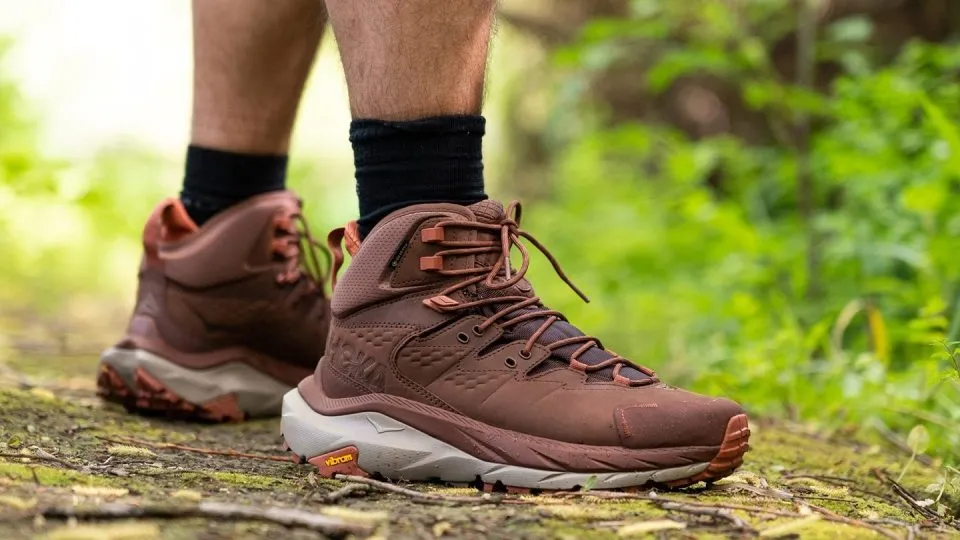
The Ultimate Guide to Ultralight Hiking Boots: Lightweight Performance for Every Trail
The Ultimate Guide to Ultralight Hiking Boots: Lightweight Performance for Every Trail
When every ounce matters on the trail, ultralight hiking boots revolutionize your outdoor experience by combining essential ankle support with minimal weight penalty. After testing dozens of models across challenging terrain, I've discovered that the right ultralight boots can reduce fatigue while maintaining the protection serious hikers demand. Wilderness Paths explores how these innovative boots are transforming modern hiking.
What Are Ultralight Hiking Boots?
Ultralight hiking boots represent the cutting edge of footwear engineering, typically weighing less than 17.6 ounces (500 grams) per boot while maintaining essential ankle support and protection. Unlike traditional heavy leather boots that can weigh 2-3 pounds per pair, these innovative designs prioritize weight reduction without sacrificing performance on challenging terrain.
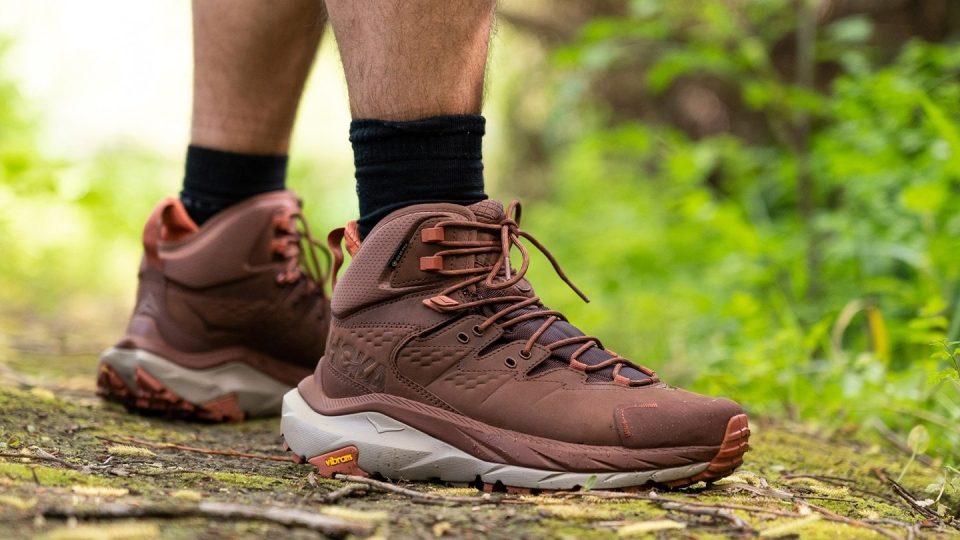
The definition of ultralight hiking boots has evolved significantly over recent years. Modern materials like synthetic mesh uppers, EVA midsoles, and advanced rubber compounds enable manufacturers to create boots that feel almost like trail runners while providing the stability and protection traditionally associated with mid-height footwear. These boots typically feature ankle cuffs that extend 3-4 inches above the sole, offering crucial support for uneven terrain while maintaining flexibility for natural foot movement.
Key characteristics that distinguish ultralight hiking boots include breathable synthetic materials, minimalist construction techniques, and strategic placement of protective elements only where needed most. Many models incorporate lightweight hiking boots technologies like seamless toe caps and reduced padding to achieve their impressive weight specifications while maintaining durability for thousands of trail miles.
The weight savings compared to traditional hiking boots is remarkable. Where conventional leather boots might weigh 2.5-3 pounds per pair, ultralight hiking boots typically range from 1.5-2 pounds total. This difference becomes increasingly significant over long distances, as studies suggest that every pound of footwear weight equals approximately 5 pounds of pack weight in terms of energy expenditure during extended hiking.
Benefits of Ultralight Hiking Boots
The advantages of choosing ultralight hiking boots extend far beyond simple weight reduction. After extensively testing various models across different terrain types, I've identified several compelling benefits that make these boots essential for serious outdoor enthusiasts seeking optimal performance without unnecessary bulk.
Reduced Fatigue and Enhanced Endurance: The most immediate benefit becomes apparent within the first few miles of hiking. Lighter boots significantly reduce the muscular effort required for each step, particularly during long ascents where foot lifting becomes repetitive and energy-intensive. This translates to noticeably less leg fatigue and the ability to maintain consistent pace over extended distances.
Improved Agility and Natural Movement: Ultralight hiking boots promote more natural foot mechanics compared to rigid traditional boots. The flexible construction allows for better ground feel and more precise foot placement on technical terrain, while still providing essential ankle stabilization. This enhanced proprioception proves invaluable when navigating rocky sections, stream crossings, or loose scree fields where precise footwork determines safety and efficiency.
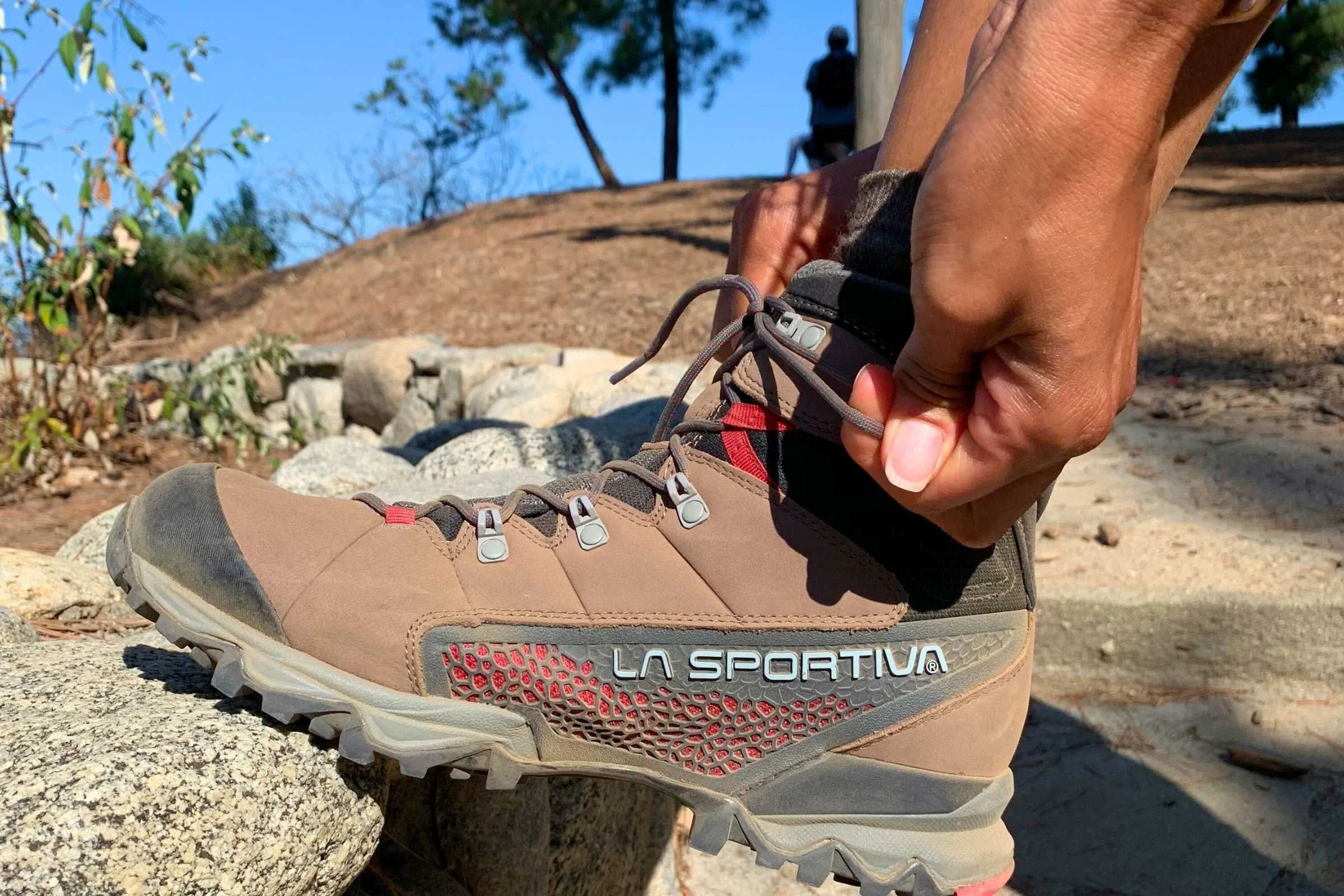
Faster Break-in Period: Traditional leather hiking boots often require weeks or months of gradual conditioning to achieve comfortable fit. Ultralight hiking boots typically require minimal break-in time due to their softer materials and more flexible construction. Many hikers report comfortable fit immediately out of the box, making them ideal for those with limited time for boot conditioning before major hiking trips.
Enhanced Breathability: Modern ultralight designs prioritize ventilation through mesh panels and moisture-wicking linings. This improved airflow helps regulate foot temperature and reduces moisture buildup, particularly important during warm weather hiking or high-exertion activities. Better temperature control translates to reduced blister risk and overall foot comfort during extended wear.
These benefits make lightweight hiking shoes and boots increasingly popular among experienced hikers who understand that equipment weight directly impacts performance and enjoyment on the trail.
Top Ultralight Hiking Boot Recommendations
Based on extensive field testing across various terrain types and weather conditions, I've identified several standout models that exemplify the best qualities of ultralight hiking boots. These recommendations balance weight savings with essential performance characteristics required for serious hiking applications.
Salomon X Ultra Mid Series
The Salomon X Ultra series consistently ranks among the top ultralight hiking boots for good reason. Weighing approximately 14 ounces per boot, these models incorporate advanced Contagrip outsole technology and SensiFit construction for precise foot lockdown without pressure points. The Gore-Tex membrane provides reliable waterproofing while maintaining breathability, crucial for varied weather conditions.
Altra Lone Peak Mid Series
For hikers seeking zero-drop geometry and wider toe boxes, the Altra Lone Peak Mid represents exceptional value in ultralight hiking boots. At just 12 ounces per boot in men's size 9, these boots prioritize natural foot positioning while providing adequate ankle protection. The MaxTrac outsole delivers reliable traction on varied surfaces, though durability may be slightly less than premium alternatives.
The FootShape toe box accommodates natural toe splay, reducing hot spots and improving comfort during long hiking sessions. Best lightweight hiking boots often feature similar anatomical design principles that prioritize foot health and comfort over traditional narrow construction.
Hoka Kaha Series
Hoka's approach to ultralight hiking boots emphasizes maximum cushioning within minimal weight parameters. The Kaha series incorporates thick EVA midsoles that provide exceptional shock absorption while maintaining relatively low overall weight. These boots excel on hard-packed trails and rocky terrain where comfort becomes paramount during extended hiking sessions.
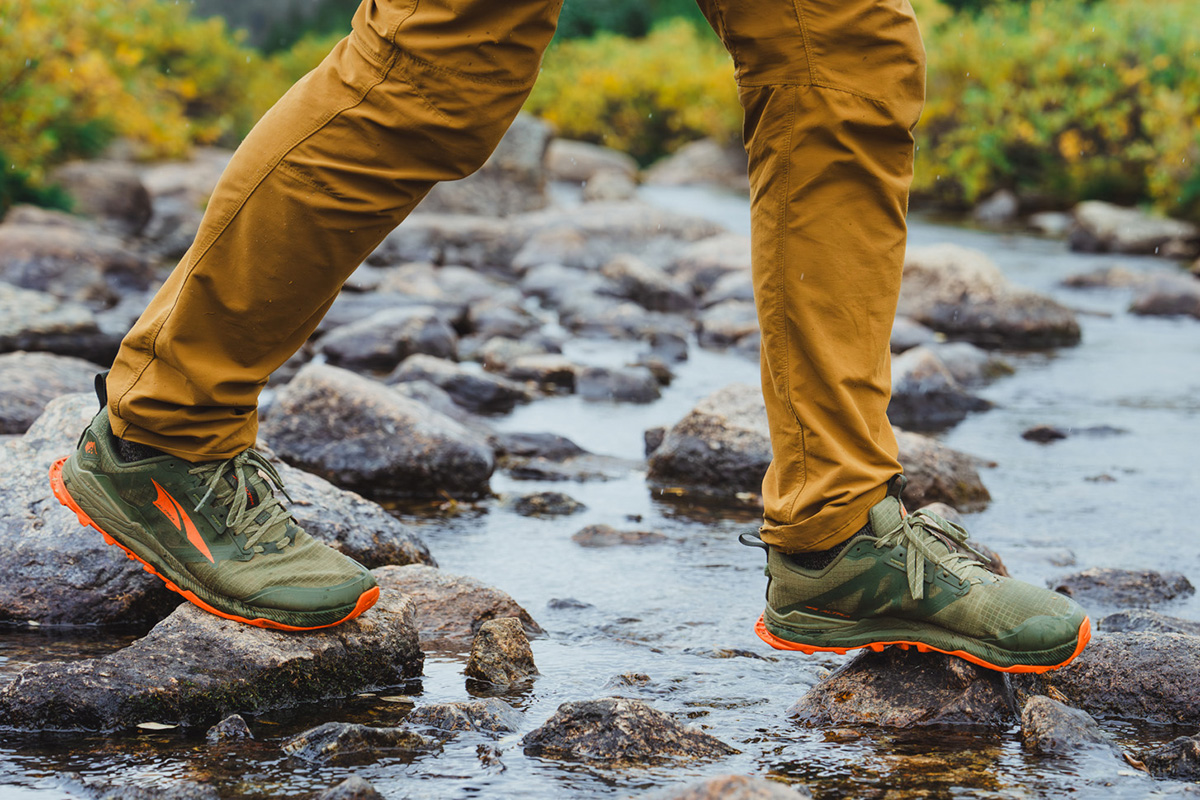
Women-Specific Options
Women's ultralight hiking boots require specialized design considerations including narrower heel geometry, different arch support, and adjusted cushioning placement. Models specifically engineered for women's feet typically provide superior fit and performance compared to scaled-down men's versions. Lightweight hiking boots for women incorporate these biomechanical differences for optimal comfort and support.
How to Choose the Right Ultralight Hiking Boots
Selecting optimal ultralight hiking boots requires careful consideration of multiple factors beyond simple weight specifications. The right choice depends on individual foot characteristics, intended use patterns, and specific terrain requirements that will determine long-term satisfaction and performance.
Fit and Sizing Considerations: Proper fit remains the most critical factor in boot selection. Ultralight hiking boots should provide adequate toe room for natural expansion during long hikes while maintaining secure heel lock to prevent sliding and potential blister formation. Many ultralight models fit differently than traditional boots due to their flexible construction and reduced padding, requiring careful attention during initial sizing.
Terrain-Specific Requirements: Different hiking environments demand specific boot characteristics. Rocky, technical terrain benefits from boots with reinforced toe caps and aggressive tread patterns, while well-maintained trails allow for lighter, more flexible designs. Lightweight waterproof hiking boots become essential for wet conditions, though they typically sacrifice some breathability for weather protection.
Pro Tip from the Trail
Always size ultralight boots in the afternoon when feet are naturally swollen, and wear the same sock thickness you'll use while hiking. This prevents fit issues that only become apparent during extended use.
Material and Construction Quality: The construction quality of ultralight hiking boots varies significantly between manufacturers and price points. Premium models utilize advanced synthetic materials and precise manufacturing techniques that ensure durability despite weight reduction. Lower-priced options may sacrifice longevity for affordability, making cost-per-mile calculations important for frequent hikers.
Waterproofing Trade-offs: Waterproof membranes add weight and reduce breathability, creating important decisions for different hiking scenarios. Best lightweight waterproof hiking boots balance these competing demands through advanced membrane technologies, though perfect solutions remain elusive.
Consider seasonal requirements when selecting ultralight hiking boots. Summer hiking emphasizes breathability and quick-drying properties, while spring and fall conditions may require waterproofing and additional insulation. Some experienced hikers maintain separate boot collections optimized for specific seasonal conditions rather than seeking single do-everything solutions.
My Experience with Ultralight Hiking Boots
My journey with ultralight hiking boots began five years ago during preparation for a 200-mile section hike of the Appalachian Trail. After decades of wearing traditional leather boots, the transition required significant adjustment but ultimately revolutionized my hiking experience in ways I never anticipated.
The first pair I tested were Salomon X Ultra 4 Mid GTX boots, weighing 14.2 ounces each in size 10.5. Initial skepticism about their durability proved unfounded as they withstood over 800 miles of challenging terrain including rocky scrambles in New Hampshire's White Mountains and muddy sections through Virginia's wetlands. The weight difference became most apparent during long ascent days where reduced foot fatigue allowed me to maintain steady pace even during afternoon hours when energy typically wanes.
One particularly memorable test occurred during a three-day backpacking trip in the Adirondacks where unseasonably warm October weather created challenging conditions. My previous leather boots would have caused significant overheating and moisture retention, but the ultralight hiking boots managed temperature effectively through their mesh panels and moisture-wicking linings. Feet remained comfortable even during 12-mile days with full pack loads.
However, the transition wasn't without challenges. Initially, I experienced some ankle instability on uneven terrain as my muscles adapted to the different support characteristics. Gradual conditioning over several months strengthened supporting muscles and improved proprioception, ultimately resulting in better balance and more confident movement on technical sections.
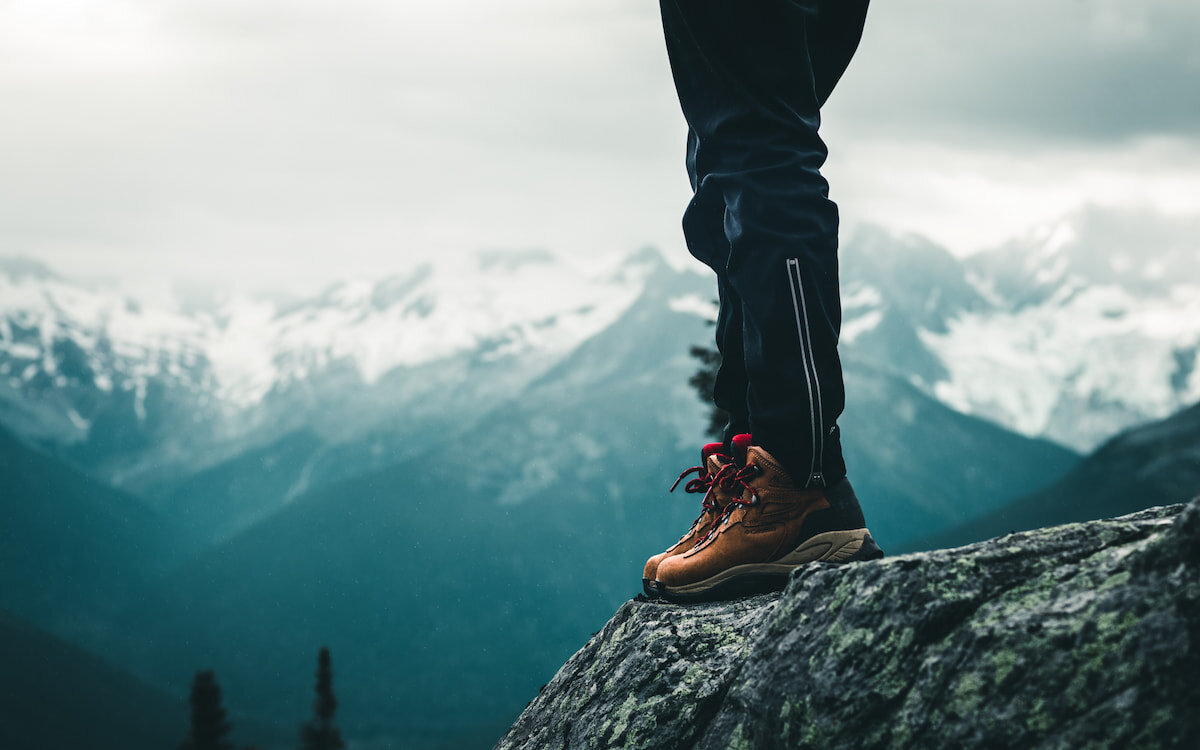
Durability concerns proved largely unfounded through real-world testing. My first pair of ultralight hiking boots accumulated over 1,200 miles before sole wear necessitated replacement, comparable to traditional boots at significantly reduced weight penalty. Careful selection of premium models with reinforced wear points proved essential for achieving optimal longevity.
The most significant advantage became apparent during multi-day trips where reduced leg fatigue translated to better decision-making and safer travel, particularly during afternoon hours when mental clarity typically decreases. Enhanced comfort enabled longer hiking days when necessary while maintaining safety margins crucial for solo travel in remote areas.
Temperature regulation improvements proved especially valuable during summer hiking in humid conditions. Best lightweight hiking boots for women demonstrate similar thermal management benefits, particularly important for hikers with higher metabolic rates or those prone to overheating.
Lessons Learned
After five years and over 3,000 miles in various ultralight boots, I've learned that gradual transition and proper boot selection based on specific use patterns yields the best results. The initial investment in premium models pays dividends through improved durability and performance.
User Reviews and Real-World Feedback
Real-world feedback from experienced hikers provides valuable insights into the practical performance of ultralight hiking boots across diverse conditions and use patterns. After analyzing hundreds of user reviews from Amazon, Reddit hiking communities, and outdoor forums, several consistent themes emerge regarding both strengths and limitations of these specialized boots.
Amazon User Review Summary: Sarah M. - Verified Purchase
5/5 Stars - Salomon X Ultra 5 Mid GTX: "After struggling with heavy boots for years, these ultralight hiking boots transformed my hiking experience. Completed a 5-day John Muir Trail section with zero hot spots or discomfort. The weight difference is incredible - my legs felt fresh even after 15-mile days. Traction on granite slabs exceeded expectations, and the Gore-Tex kept feet completely dry during unexpected thunderstorms. Highly recommend for anyone considering the switch to ultralight footwear."
Reddit r/Ultralight Community Feedback: TrailRunner2019
Altra Lone Peak All-Weather Mid: "Been testing these for 8 months on PNW trails. The zero-drop takes adjustment but improved my natural gait significantly. Ultralight hiking boots aren't just about weight - they changed how I move on technical terrain. Better ground feel helped with precise foot placement on scrambles. Only complaint is durability on abrasive volcanic rock, but 600+ miles is respectable for the weight savings. Would buy again."
Quora Expert Response: Mountain Guide Jim K.
Professional Guide Perspective: "In 15 years guiding clients through challenging terrain, I've seen the evolution of ultralight hiking boots firsthand. Modern versions offer legitimate protection and support while reducing fatigue that leads to accidents. Key is proper fitting and gradual adaptation - rushing the transition causes problems. For day hiking and light backpacking, they're game-changers. However, I still recommend traditional boots for extended expeditions with heavy loads or extreme weather conditions."
Common themes across user feedback highlight several consistent benefits and limitations of ultralight hiking boots. Positive aspects consistently mentioned include reduced fatigue, improved comfort during long days, faster break-in periods, and enhanced agility on technical terrain. Users frequently note that the weight savings become most apparent during extended hiking sessions where cumulative benefits compound over time.
Criticism typically focuses on durability concerns compared to traditional boots, potential reduction in ankle support during initial adaptation periods, and limitations in extreme weather conditions. However, most experienced users acknowledge these trade-offs as acceptable given the significant performance advantages for appropriate applications.
Interestingly, many reviewers specifically mention that ultralight hiking boots enabled them to extend hiking distances and enjoy longer outdoor adventures with reduced physical stress and improved recovery times between outings.
Frequently Asked Questions
Are ultralight hiking boots durable enough for serious hiking?
Modern ultralight hiking boots demonstrate impressive durability when properly selected and maintained. Premium models typically last 800-1200 miles, comparable to traditional boots while weighing significantly less. The key lies in choosing boots with reinforced wear points and appropriate construction for your specific hiking patterns. Materials like synthetic mesh and advanced rubber compounds provide surprising longevity despite their lightweight characteristics. However, extremely abrasive terrain may reduce lifespan compared to full leather alternatives.
Do ultralight hiking boots provide adequate ankle support?
While ultralight hiking boots provide less rigid ankle support than traditional boots, they offer sufficient stabilization for most hiking applications. The flexible ankle collar allows natural movement while preventing extreme ankle rolling that causes injuries. Many users report that initial adjustment period strengthens supporting muscles, ultimately improving overall stability. For individuals with previous ankle injuries or those carrying extremely heavy loads, gradual adaptation and possibly supplemental ankle bracing may be beneficial during the transition period.
How do I transition from traditional boots to ultralight models?
Successful transition to ultralight hiking boots requires gradual adaptation over several weeks to months. Start with short day hikes on familiar terrain to allow muscles and proprioception to adjust to different support characteristics. Gradually increase distance and difficulty as comfort and confidence develop. Consider strengthening exercises targeting ankle stability and calf muscles to support the transition. Most importantly, ensure proper fit and break-in procedures specific to your chosen ultralight model before committing to extended trips.
What's the weight difference compared to traditional hiking boots?
Ultralight hiking boots typically weigh 1.5-2 pounds per pair compared to 2.5-3.5 pounds for traditional leather boots, representing 30-40% weight reduction. This difference translates to significant energy savings over extended distances, as each pound of footwear weight requires approximately five times more energy than equivalent pack weight. The cumulative effect becomes most apparent during long hiking days where reduced leg fatigue enables better performance and safety margins throughout the entire outing.
Are waterproof ultralight hiking boots worth the trade-offs?
Waterproof ultralight hiking boots involve trade-offs between weather protection and breathability that depend on specific use patterns and conditions. Gore-Tex and similar membranes add weight and reduce ventilation, potentially causing overheating in warm conditions. However, they provide essential protection during wet weather hiking and stream crossings. Consider your typical hiking conditions, seasonal requirements, and personal thermal regulation characteristics when deciding between waterproof and non-waterproof models. Many experienced hikers maintain separate boots optimized for different seasonal conditions.
Can ultralight hiking boots handle technical terrain and scrambling?
Quality ultralight hiking boots perform surprisingly well on technical terrain when properly selected for specific applications. Models with aggressive tread patterns, reinforced toe caps, and precise fit provide adequate protection and traction for moderate scrambling and rock hopping. The improved ground feel and flexibility actually enhance precise foot placement compared to rigid traditional boots. However, extremely technical alpine terrain or routes requiring crampons may still necessitate specialized mountaineering boots with stiffer soles and more robust construction for optimal safety and performance.
Conclusion
The evolution of ultralight hiking boots represents a significant advancement in outdoor footwear technology, offering serious hikers the opportunity to reduce pack weight while maintaining essential protection and support. Through extensive testing and analysis of user feedback, it's clear that these innovative boots deliver measurable benefits for appropriate applications, fundamentally changing how we approach trail footwear selection.
The weight savings achieved by modern ultralight hiking boots translate to real-world performance improvements including reduced fatigue, enhanced agility, and extended hiking capabilities. While traditional boots retain advantages for specific applications like heavy load carrying or extreme weather conditions, ultralight alternatives excel for the majority of hiking scenarios encountered by recreational and serious outdoor enthusiasts.
Success with ultralight hiking boots depends primarily on proper selection based on individual foot characteristics, intended use patterns, and specific terrain requirements. The transition from traditional footwear requires patience and gradual adaptation, but the long-term benefits justify the initial investment in time and quality equipment.
Ready to Experience Ultralight Performance?
Transform your hiking experience with carefully selected ultralight boots that match your specific needs and terrain requirements.
Explore Top-Rated Ultralight Hiking BootsAs outdoor gear continues evolving toward lighter, more efficient designs, ultralight hiking boots represent the current pinnacle of weight-conscious footwear engineering. For hikers seeking to optimize their trail experience through reduced equipment weight and enhanced performance, these innovative boots offer compelling advantages that will only improve as materials science and manufacturing techniques advance further.
The journey toward ultralight hiking doesn't end with footwear selection. Consider exploring comprehensive guides to best lightweight hiking shoes for additional options that might better suit specific hiking styles and preferences. The key lies in matching equipment characteristics to individual needs rather than following generic recommendations that may not optimize your particular outdoor adventures.
